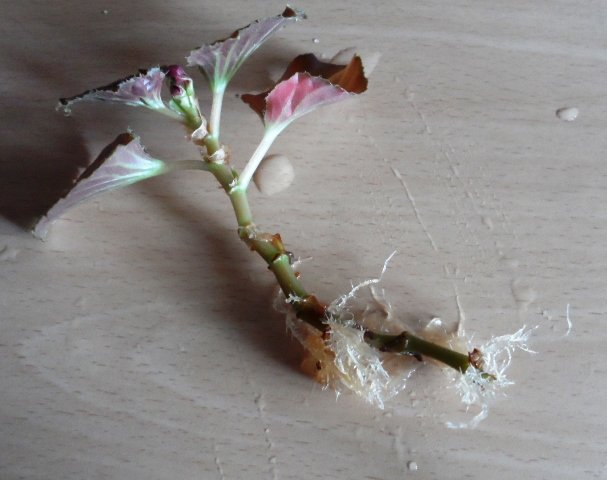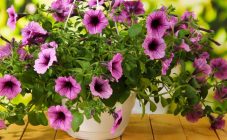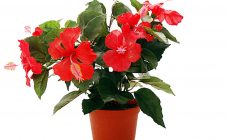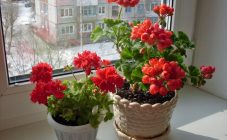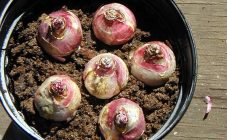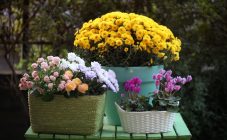Content:
Breeders have bred many varieties of begonias, both decorative leafy and decorative flowering. They are also subdivided into tuberous and root. This article discusses how you can grow a beautiful plant at home, how to care for begonia at home.
Buying a plant, how to care for begonia at home after purchase
Before buying, begonia must be carefully examined from all sides. For a plant to please its owner for a long time, it must be healthy. The leaves need to be checked not only from the top side, but also from the bottom. They should not have small insects, cobwebs. The leaf plates should be dense, without holes and spots.
It is preferable to purchase plants with buds in the half-opening phase. This will allow you to admire the flowering of begonia for a longer time, while inflorescences may fall off a flowering bush from a stressful condition.
If a grower wants to purchase tubers in order to grow plants, you need to choose elastic, medium-sized. The presence of various stains on them indicates improper storage, in this case it is better to refuse to buy.
In order for a plant to delight others with its decorative effect for a long time, it must be provided with proper care. Immediately after purchase, the acquisition is quarantined in a room without direct sunlight and drafts. This is necessary in order not to infect the plants in the room if it turns out that there are still insects on the room begonia. And also in order not to infect the begonia itself: from the change of residence, it is slightly weakened and may not cope with the shock.
For the same reason, the plant is not transplanted immediately after purchase. This procedure can be performed after 2-3 weeks. But if there is a threat of death of a flower from waterlogging or other unfavorable circumstances, it is urgently transplanted.
Landing rules
Tuberous and rhizome begonias are planted in different ways. Planting tuberous begonia:
- The surface of the tuber is cleaned of dirt and dry roots.
- For 30 minutes, it must be immersed in a weak solution of potassium permanganate.
- A small pot is selected, expanded clay and broken shards are placed on the bottom.
- Then the container is filled with soil, a small depression is made on top, into which the tuber is planted with the convex side.
- From above, the soil is filled up in such a way that the upper part of the tuber remains on the surface.
- The soil is watered, the pot with the seedling is exposed in a warm place for germination.
After about 7-10 days, the first shoots will appear. Rhizome begonia has no tuber, so it is planted like a normal plant.
- A pot is chosen a little larger in volume than the previous one.
- Its bottom is filled with drainage, then the soil slightly wakes up.
- A plant is planted along with a lump of earth, the voids are filled with the remaining soil.
- Begonia is watered, exposed for several days in a shaded place. Then - on a well-lit window sill, but without exposure to sunlight.
Reproduction
The begonia family can be propagated in 4 ways: seeds, tubers, cuttings, leaves. The first of the methods is laborious, not always crowned with success. It should be used only if the grower has purchased seeds of a rare variety. Vegetative propagation of begonias is easier and more effective.
Cuttings
This is the easiest way:
- a middle or apical stalk 6-10 cm long with several leaves is cut off;
- its lower part is sprinkled with charcoal to avoid decay;
- the shoot is planted in a pot with moist soil;
- the handle is arranged with the conditions of a mini-greenhouse.
The pot is placed in a warm, well-lit place without sun glare. The plant is moderately watered and ventilated. After about 3 weeks, the seedling will take root and grow.
Leaves
This method is subdivided into breeding with a leaf with a petiole, without a petiole, a piece of leaf plate.
For propagation by a leaf without a petiole, cuts are made across the veins on the plate. Then it is laid with its bottom side on damp ground and pinned. After a while, babies form at the incision sites. When they grow up a little, they are planted in separate containers.
The leaf can be cut into several pieces and each piece can be rooted. But the most common method is leaf propagation with a petiole. Here's how it's done:
- a leaf with a petiole is cut off with a sharp knife;
- an activated carbon tablet dissolves in a glass of warm water;
- the sheet is placed in water;
- after a while, the roots are formed first, then the children.
Tubers
Tuberous begonias are propagated in this way. To do this, the tuber is cut into several parts, each of which is sprinkled with activated carbon or ash to prevent decay. Then they are planted in a shallow pot for germination, covered with foil or glass.
Begonia: home care
The flower should be placed in a well-lit place, but without the sun's rays. If the windows are dark, phytolamps can be used. The permissible air temperature varies between 16-28 ° C. In other ranges, leaves and flowers may fade.
Begonia loves moist air, but it is undesirable to spray it: dark spots will appear on the leaves from this. The best option is to place the plant pot in a tray with moistened small stones.
Top dressing is carried out since spring. Decorative leafy begonias are fertilized first with nitrogen (to build up green mass), then with complex fertilizers once every 2 weeks. Decorative flowering plants can be fed with nitrogen once in the spring. Then before budding and during it - with complex fertilizers.
When the shoot reaches 6-10 cm, the first pruning of the begonia is carried out; watering is simultaneously reduced. After this, dormant buds will begin to awaken, from which lateral shoots will grow. When they grow up a little, they are pinched. This procedure serves several purposes:
- the crown of the plant is formed;
- flowering improves;
- the decorative appearance of begonias is maintained;
- planting material is purchased;
- the plant is rejuvenated.
Diseases, pests and control of them
Most often, a nondescript begonia is the result of improper care. For example, if it sheds leaves and buds, a possible cause is dry air and dry soil. Pale leaves may be due to lack of light.
But if the leaves of the flower begin to dry, this may still be a sign of vascular bacteriosis.With a disease such as gray rot, the leaves take on a grayish tint. All fungal diseases are treated by spraying with a solution of any fungicide.
Plant care in winter
In winter, begonias require rest. At this time, they are kept in a room with an air temperature not higher than + 16 ° C. Watering is reduced to a minimum, fertilization stops altogether. In winter, begonia is not transplanted or multiplied.
To preserve tubers until spring, they are placed in containers with sawdust and sent to the basement for the winter. In an apartment, they can be kept in the refrigerator, sprinkled with sawdust and placed in a bag with ventilation.
Proper maintenance of begonias in winter will allow you to admire the beautiful leaves and flowers in summer. In the warm season, begonia can be planted in the garden, but only under the crown of trees.
Growing and caring for begonias at home takes some skill. But, having mastered it, a novice florist will be able not only to decorate his house with this beauty, but also to purify the air in it: begonia fights against pathogenic fungi, bacteria, microorganisms.

